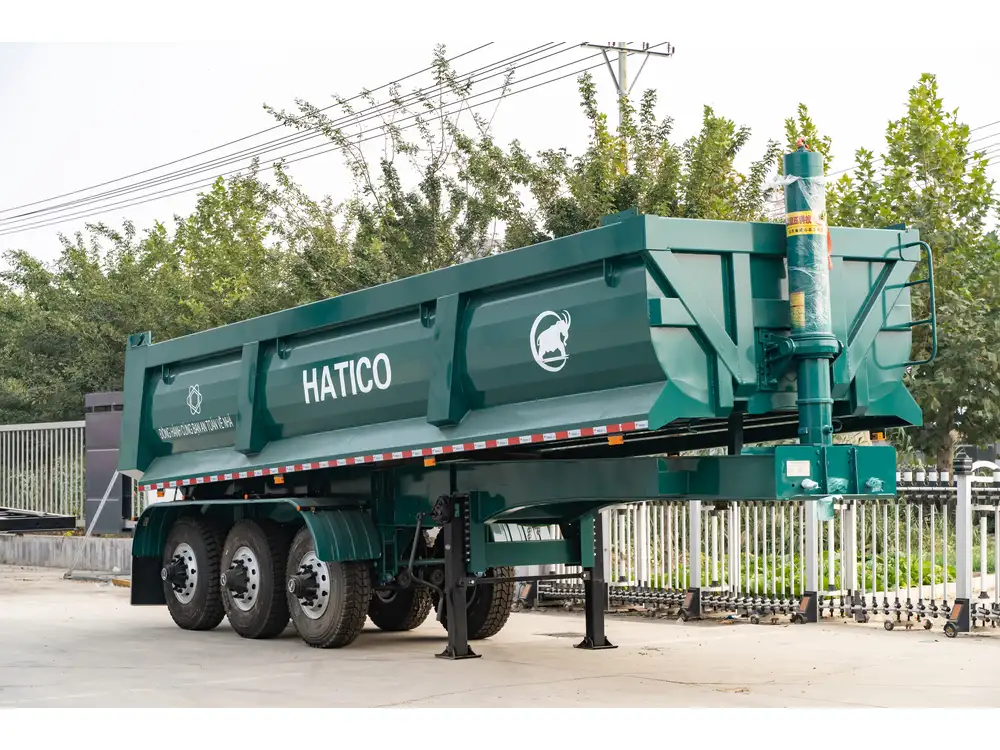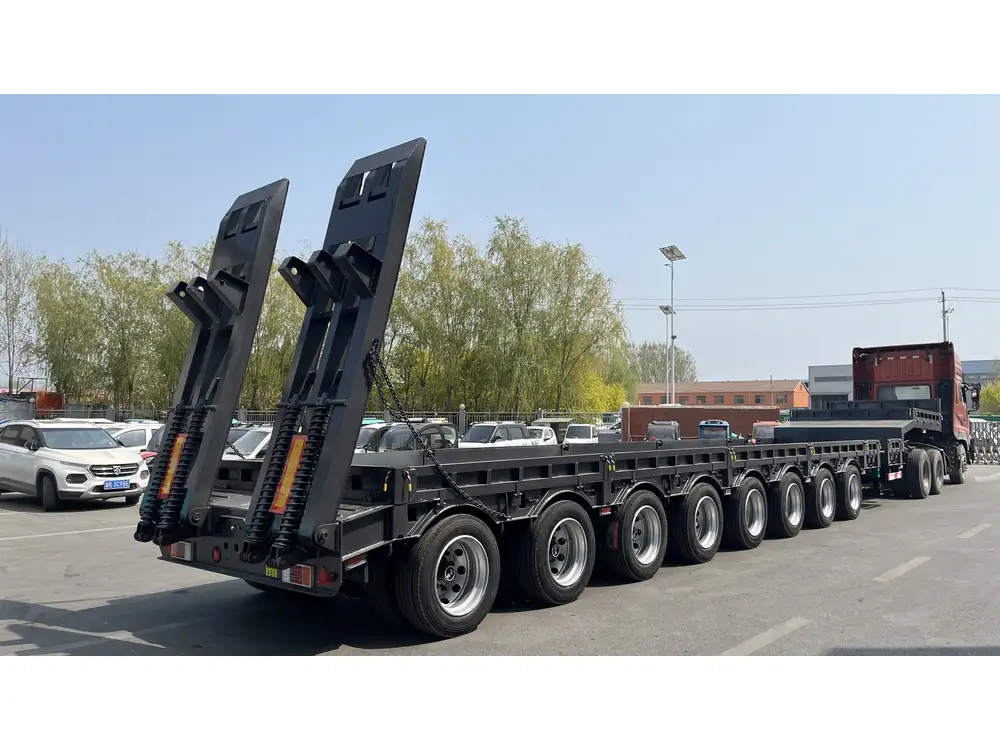When it comes to logistics and heavy hauling, flatbed trailers serve as pivotal tools in transportation, enabling efficient movement of various goods. For those in the industry or considering their options, understanding the dimensions of a flatbed trailer—specifically, a 48-foot flatbed—is crucial. In this article, we dissect the specifics about the width of a 48-foot flatbed trailer, its uses, advantages, and factors to consider when utilizing this type of trailer.
Dimensions of a 48-Foot Flatbed Trailer
To establish a foundational understanding, let’s delineate the standard dimensions of a 48-foot flatbed trailer:
| Dimension | Measurement |
|---|---|
| Length | 48 feet (approximately 14.63 meters) |
| Width | 96 inches (8 feet, or approximately 2.44 meters) |
| Height | Typically varies from 5.5 to 6.5 feet (approx. 1.68 to 1.98 meters) |
| Weight Capacity | Usually varies from 45,000 to 48,000 pounds (20,411 to 21,772 kg) depending on the trailer construction and materials |
The standard width of a 48-foot flatbed trailer is 96 inches. While this is the most common dimension, it’s essential to recognize that specialized trailers can vary slightly in their measurements, particularly in instances where specialized requirements are paramount, such as additional safety features or specific industry regulations.
Advantages of a 48-Foot Flatbed Trailer
Utilizing a 48-foot flatbed trailer offers myriad benefits to those in the hauling and shipping industries. Here are some primary advantages:

1. Flexibility in Cargo Handling
Due to the open design, flatbed trailers provide significant flexibility for loading and unloading cargo. Goods can be packed from the sides, top, or rear—a feature highly beneficial for oversized loads like machinery or building materials.
2. Efficient Weight Distribution
The flatbed design allows for even distribution of weight across the trailer. This characteristic provides a stable platform and helps to minimize the risk of cargo shifting during transport, thus promoting safety and compliance with loading regulations.
3. Diverse Cargo Compatibility
Flatbed trailers can accommodate a wide variety of cargo, including but not limited to:
- Construction materials (lumber, steel beams, etc.)
- Machinery and equipment
- Palletized goods
- Pipe and other elongated commodities

4. Cost-Effective
Given their capability to carry larger loads than their enclosed counterparts—like box trailers—flatbed trailers can prove to be more cost-effective per haul, reducing transport expenses for businesses.
Legal Width Limits and Regulations
While the standard width for a flatbed trailer is 96 inches, there are regulations imposed by state and federal bodies determining legal width limits on highways:
- Federal Standards: In the United States, federal regulations stipulate a maximum width of 102 inches (8.5 feet) for most commercial vehicles, although there are exemptions under specific conditions.
Considerations for Transporting Overwide Loads
If the cargo width exceeds these limits, additional permits and route considerations must be planned. Key elements include:
| Aspect | Details |
|---|---|
| Permits | Required for any load exceeding legal width; often costly and time-consuming to obtain. |
| Route Planning | Must consider height clearances, bridge structures, and road conditions. |
| Escort Vehicles | May be necessary for safety and compliance with road regulations. |

Loading Strategies for a 48-Foot Flatbed Trailer
Proper loading techniques are vital for maximizing the trailer’s capabilities. Here’s how to efficiently load a 48-foot flatbed trailer:
1. Assessing Weight Distribution
Before loading, evaluate the weight of cargo to ensure an even distribution across the trailer. Placing heavier items centrally reduces the chance of swaying and improves balance during transport.
2. Utilizing Chains and Straps
When securing cargo, use high-quality chains and straps to keep items in place. The use of winches and ratchets can promote optimal tightening and ensure protection against shifting.

3. Strategic Placement of Cargo
- Heavier Items First: Load the heaviest items first and distribute lighter items accordingly.
- Securing Overhangs: If the cargo overhangs the sides or rear, ensure it remains secure and adheres to local regulations regarding overhang limits.
4. Employing Safety Equipment
Always utilize tarps or UV protection when transporting sensitive cargo. This protects against weather-related damage during transport.
The Importance of Choosing the Right Manufacturer
When considering a 48-foot flatbed trailer for your needs, selecting an experienced, reputable manufacturer is essential. Look for manufacturers who:
- Offer customizable options tailored to specific business requirements.
- Provide robust warranties and after-sales support.
- Demonstrate a strong track record in quality and durability.

Top Factors to Consider When Buying a Flatbed Trailer
| Factor | Description |
|---|---|
| Construction Material | Options include steel, aluminum, or composite; each has unique benefits. |
| Weight Ratings | Ensure the trailer can handle the average weight of your usual loads. |
| Tire Quality | Consider the size, tread, and durability of the tires based on your routes. |
| Brake & Safety Features | Analyze the effectiveness of braking systems and additional safety measures. |
Common Questions About 48-Foot Flatbed Trailers
1. How Much Weight Can a 48-Foot Flatbed Trailer Carry?
The weight capacity ranges from 45,000 to 48,000 pounds. However, actual capacity may vary based on the configuration and materials used in the trailer’s construction.

2. What Licenses are Needed to Operate a 48-Foot Flatbed Trailer?
Operating a flatbed trailer often requires a Commercial Driver’s License (CDL), depending on the gross vehicle weight rating (GVWR) and local regulations.
3. Can Flatbed Trailers Carry Hazmat Loads?
Flatbeds can transport hazardous materials, but strict compliance with regulations established by the Department of Transportation (DOT) is mandatory.
4. Are There Weight Restrictions on Flatbed Trailers?
Yes, weight restrictions vary depending on the state and local laws. It’s crucial to check regional regulations to avoid fines and ensure safety.

Conclusion: Maximizing the Utility of Your 48-Foot Flatbed Trailer
Understanding the dimensions, capacities, and practical applications of a 48-foot flatbed trailer empowers businesses to make informed decisions. With a standard width of 96 inches, this versatile tool meets the demands of a wide array of shipping needs while offering the flexibility, efficiency, and cost-effectiveness that are critical in today’s fast-paced logistics landscape. Whether you’re dealing with construction materials or transporting heavy machinery, ensuring proper loading techniques and adherence to regulatory standards can significantly enhance safety and reliability.
For manufacturers and businesses alike, investing in quality and appropriate trailer options can drastically affect operational efficiency. By staying informed and strategically planning transports, organizations can leverage the full potential of their 48-foot flatbed trailers, ensuring success in every haul.



